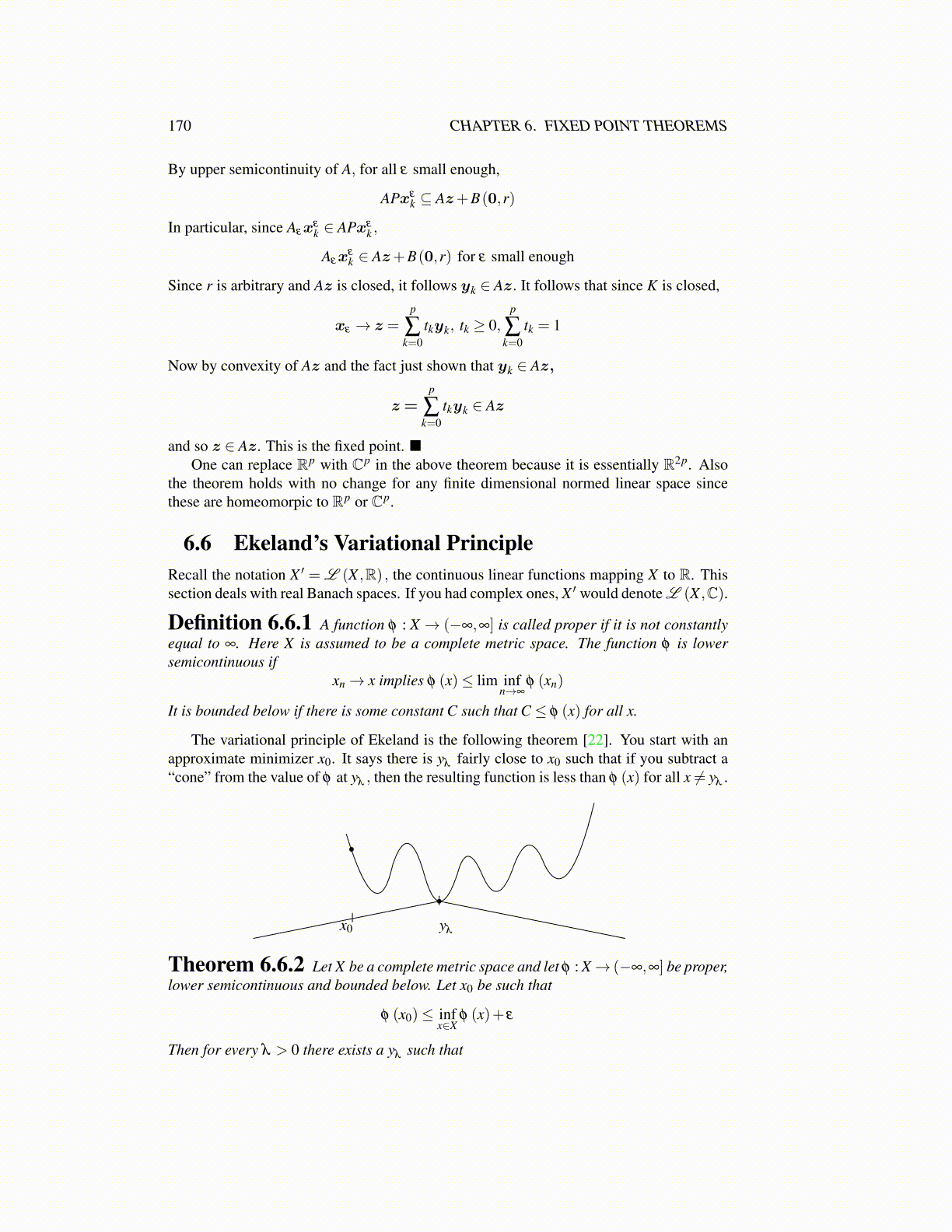
170 CHAPTER 6. FIXED POINT THEOREMS
By upper semicontinuity of A, for all ε small enough,
APxεk ⊆ Az+B(0,r)
In particular, since Aεxεk ∈ APxε
k ,
Aεxεk ∈ Az+B(0,r) for ε small enough
Since r is arbitrary and Az is closed, it follows yk ∈ Az. It follows that since K is closed,
xε → z =p
∑k=0
tkyk, tk ≥ 0,p
∑k=0
tk = 1
Now by convexity of Az and the fact just shown that yk ∈ Az,
z=p
∑k=0
tkyk ∈ Az
and so z ∈ Az. This is the fixed point. ■One can replace Rp with Cp in the above theorem because it is essentially R2p. Also
the theorem holds with no change for any finite dimensional normed linear space sincethese are homeomorpic to Rp or Cp.
6.6 Ekeland’s Variational PrincipleRecall the notation X ′ = L (X ,R) , the continuous linear functions mapping X to R. Thissection deals with real Banach spaces. If you had complex ones, X ′ would denote L (X ,C).
Definition 6.6.1 A function φ : X → (−∞,∞] is called proper if it is not constantlyequal to ∞. Here X is assumed to be a complete metric space. The function φ is lowersemicontinuous if
xn→ x implies φ (x)≤ lim infn→∞
φ (xn)
It is bounded below if there is some constant C such that C ≤ φ (x) for all x.
The variational principle of Ekeland is the following theorem [22]. You start with anapproximate minimizer x0. It says there is yλ fairly close to x0 such that if you subtract a“cone” from the value of φ at yλ , then the resulting function is less than φ (x) for all x ̸= yλ .
x0 yλ
Theorem 6.6.2 Let X be a complete metric space and let φ : X→ (−∞,∞] be proper,lower semicontinuous and bounded below. Let x0 be such that
φ (x0)≤ infx∈X
φ (x)+ ε
Then for every λ > 0 there exists a yλ such that